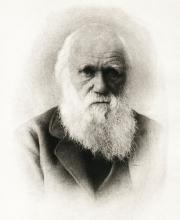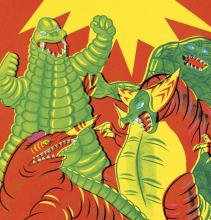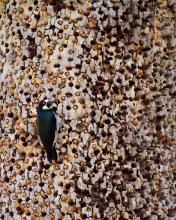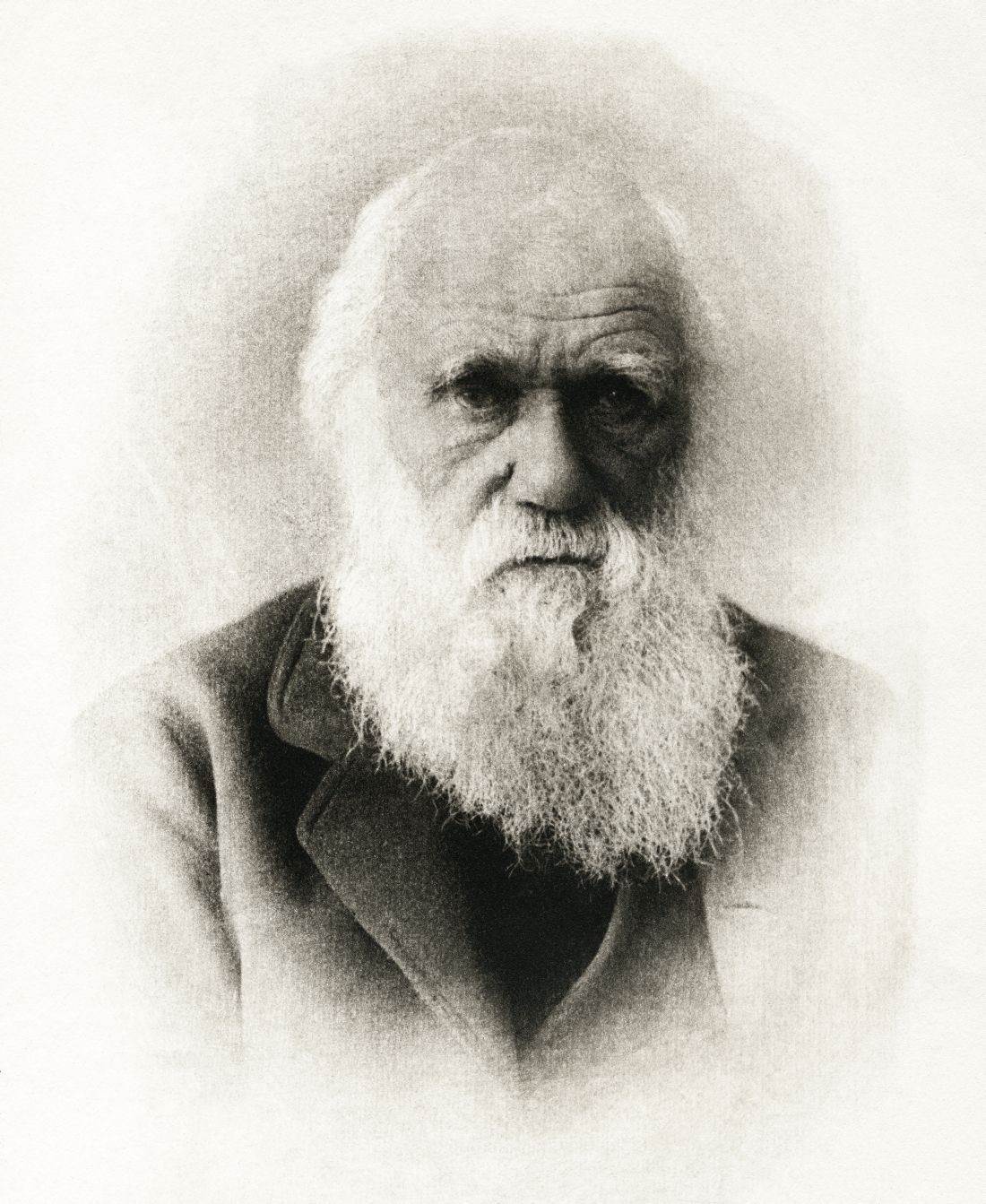User login
Forks out for science
True scientists should have no limits to what they’ll do for their research. Charles Darwin proved that greatly during his life – he spent years discovering and cataloging new species.
But did you know he also chowed down on nearly every animal he found?
His taste for unusual fare began at Cambridge as a member of the “Glutton Club.” He and his fellow gluttons were dedicated to sampling “birds and beasts which were before unknown to human palate,” as reported in an article on NPR. His eating adventures only grew while on the famed Beagle voyage, where he tried puma, iguanas, armadillos, giant tortoises, and even a 20-pound rodent that he declared “the very best meat I ever tasted.”
The noble tradition of tasting your test subjects continues today. The author of the article referenced above asked scientists on social media for stories of eating what they are supposed to be studying, and the answers came pouring in.
From tasting tadpoles to nibbling on 30,000-year-old bison meat, scientists all over the world have found they can’t resist the call to just have a tiny taste.
The umbrella’s just not cutting it
Bad news for everyone who hates melanoma but also hates sunscreen: That Tommy Bahama beach umbrella isn’t doing much to shield your skin.
A team lead by researcher Hao Ou-Yang conducted a study comparing the effects of harmful UV rays on subjects who used sunscreen with subjects who only used the shade of an umbrella.
In the battle of Sun vs. Umbrella, the humble parasol had no chance. While neither sun protection method completely prevented sunburn, 78% of the umbrella-only group experienced sunburn, compared with 25% of the sunscreen wearers.
The researchers determined that umbrella shade alone is not sufficient to protect against sunburn during extended exposure to the sun (in the case of this experiment, exposure was 3.5 hours). Sunscreen, despite being smelly and sticky and gloopy, is definitely needed to protect skin from those UV rays. So, suck it up and pile on that Coppertone this summer.
Oh no, there goes Tokyo (again)
Godzilla. The king of the monsters. For 65 years, the big green guy has been the scourge (mostly) of Japan and the entire world. He arrives, he destroys, and there is very nearly nothing we can do about him.
If you’re an astute fan of the Godzilla series (and we love a good Godzilla movie at MDedge headquarters), you’ll have noticed that Godzilla is a lot bigger than he used to be. In the first movie, he stood at a relatively meager 50 meters. Nowadays, he’s scraping 120 meters, more than double his original size.
What’s going on?
In an actual study published in Science, a team at Dartmouth College in Hanover, N.H., determined that Godzilla is evolving 30 times faster than any other organism on Earth. It’s enough to make even the influenza virus jealous.
So, what is going on? Why is Godzilla evolving so quickly? The scientists assumed that Godzilla is a ceratosaurid dinosaur and ran through the usual suspects. No other dinosaur of that family got so big. Genetic drift and natural selection can’t explain it either.
The truth may be more unsettling: Our own anxiety is fueling his growth. Godzilla was born because of nuclear testing and the fear stemming from it. And the Dartmouth team even found a correlation between Godzilla’s size and American military spending from 1954 to 2019, a neat barometer of the world’s collective anxiety.
Or, you know, people just want to see a 400-foot-tall lizard destroying things. But that’s hardly worthy of a study in an elite research journal.
Hole lotta trypophobia goin’ on
We didn’t know this was even a thing, but Twitter doesn’t like pictures of woodpeckers … digging little holes in tree trunks … and then stuffing the holes with acorns.
A recent tweet of such a photo caused a minor pandemic of virality when users reacted with revulsion and panic caused by trypophobia, which is a fear of irregular patterns of small holes or bumps. You won’t find trypophobia in the DSM-5 – the term was first used in an Internet forum in 2005 – but it is a source of some debate among academics, according to Live Science.
One group says the patterns look like some poisonous animals, and that people are programmed by evolution to fear such creatures. Others suggest that the reaction is not fear but disgust, because the patterns of holes look like the lesions and pustules caused by infectious diseases such as smallpox.
We’re not scientists, so we’ll stay out of the debate on causality. But we do think we’ve uncovered the first documented case, and it goes back to the 1960s TV series “Batman.” The hero’s trusted sidekick, Robin (coincidentally, another type of bird), must have been the first person with trypophobia:
“Holy tintinnabulation!”
“Holy uncanny photographic mental processes!”
“Holy priceless collection of Etruscan snoods!”
Holy patterns of woodpecker acorns! There can be no diagnostic doubt: For Robin, it was all about the holes.
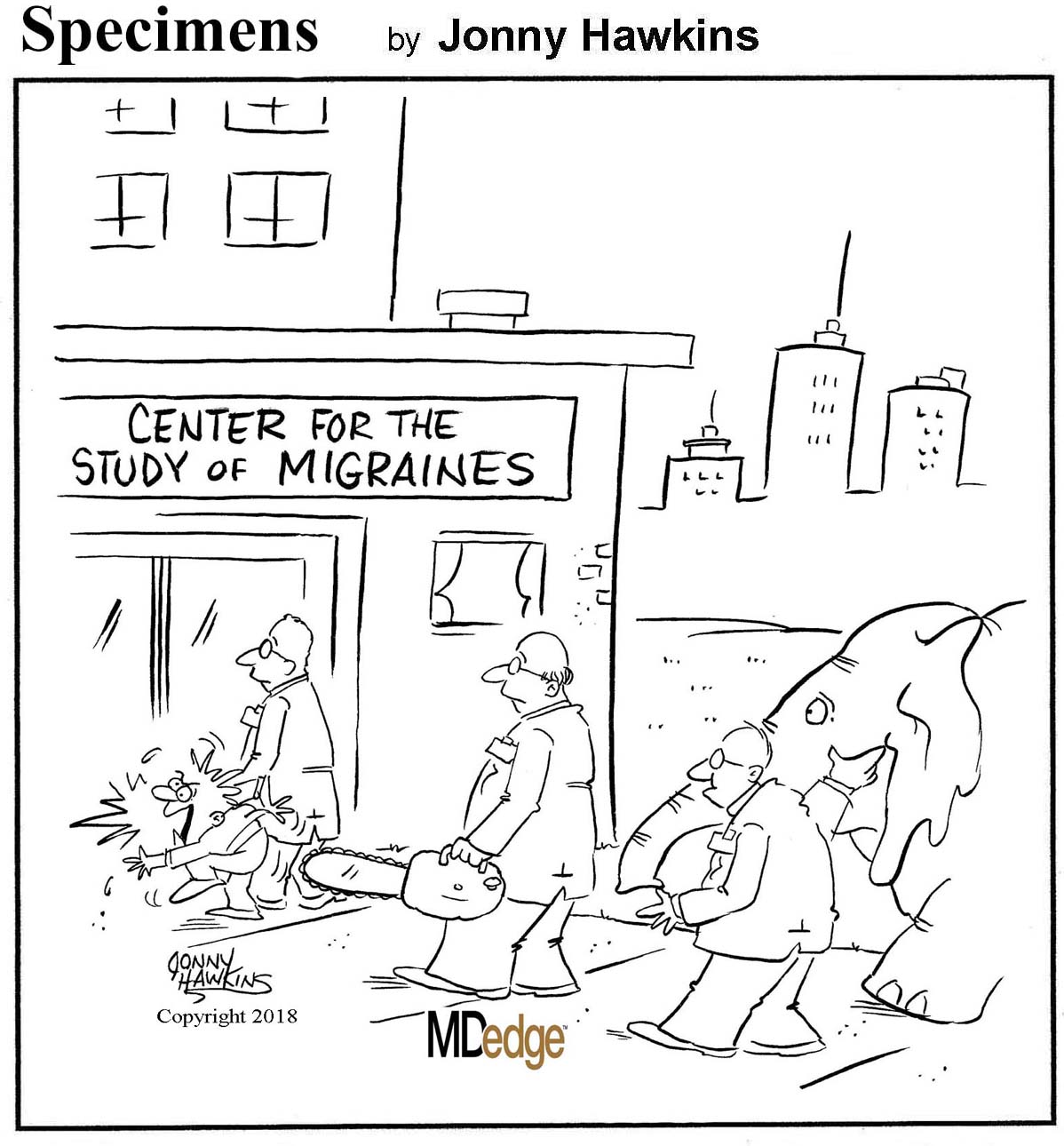
Forks out for science
True scientists should have no limits to what they’ll do for their research. Charles Darwin proved that greatly during his life – he spent years discovering and cataloging new species.
But did you know he also chowed down on nearly every animal he found?
His taste for unusual fare began at Cambridge as a member of the “Glutton Club.” He and his fellow gluttons were dedicated to sampling “birds and beasts which were before unknown to human palate,” as reported in an article on NPR. His eating adventures only grew while on the famed Beagle voyage, where he tried puma, iguanas, armadillos, giant tortoises, and even a 20-pound rodent that he declared “the very best meat I ever tasted.”
The noble tradition of tasting your test subjects continues today. The author of the article referenced above asked scientists on social media for stories of eating what they are supposed to be studying, and the answers came pouring in.
From tasting tadpoles to nibbling on 30,000-year-old bison meat, scientists all over the world have found they can’t resist the call to just have a tiny taste.
The umbrella’s just not cutting it
Bad news for everyone who hates melanoma but also hates sunscreen: That Tommy Bahama beach umbrella isn’t doing much to shield your skin.
A team lead by researcher Hao Ou-Yang conducted a study comparing the effects of harmful UV rays on subjects who used sunscreen with subjects who only used the shade of an umbrella.
In the battle of Sun vs. Umbrella, the humble parasol had no chance. While neither sun protection method completely prevented sunburn, 78% of the umbrella-only group experienced sunburn, compared with 25% of the sunscreen wearers.
The researchers determined that umbrella shade alone is not sufficient to protect against sunburn during extended exposure to the sun (in the case of this experiment, exposure was 3.5 hours). Sunscreen, despite being smelly and sticky and gloopy, is definitely needed to protect skin from those UV rays. So, suck it up and pile on that Coppertone this summer.
Oh no, there goes Tokyo (again)
Godzilla. The king of the monsters. For 65 years, the big green guy has been the scourge (mostly) of Japan and the entire world. He arrives, he destroys, and there is very nearly nothing we can do about him.
If you’re an astute fan of the Godzilla series (and we love a good Godzilla movie at MDedge headquarters), you’ll have noticed that Godzilla is a lot bigger than he used to be. In the first movie, he stood at a relatively meager 50 meters. Nowadays, he’s scraping 120 meters, more than double his original size.
What’s going on?
In an actual study published in Science, a team at Dartmouth College in Hanover, N.H., determined that Godzilla is evolving 30 times faster than any other organism on Earth. It’s enough to make even the influenza virus jealous.
So, what is going on? Why is Godzilla evolving so quickly? The scientists assumed that Godzilla is a ceratosaurid dinosaur and ran through the usual suspects. No other dinosaur of that family got so big. Genetic drift and natural selection can’t explain it either.
The truth may be more unsettling: Our own anxiety is fueling his growth. Godzilla was born because of nuclear testing and the fear stemming from it. And the Dartmouth team even found a correlation between Godzilla’s size and American military spending from 1954 to 2019, a neat barometer of the world’s collective anxiety.
Or, you know, people just want to see a 400-foot-tall lizard destroying things. But that’s hardly worthy of a study in an elite research journal.
Hole lotta trypophobia goin’ on
We didn’t know this was even a thing, but Twitter doesn’t like pictures of woodpeckers … digging little holes in tree trunks … and then stuffing the holes with acorns.
A recent tweet of such a photo caused a minor pandemic of virality when users reacted with revulsion and panic caused by trypophobia, which is a fear of irregular patterns of small holes or bumps. You won’t find trypophobia in the DSM-5 – the term was first used in an Internet forum in 2005 – but it is a source of some debate among academics, according to Live Science.
One group says the patterns look like some poisonous animals, and that people are programmed by evolution to fear such creatures. Others suggest that the reaction is not fear but disgust, because the patterns of holes look like the lesions and pustules caused by infectious diseases such as smallpox.
We’re not scientists, so we’ll stay out of the debate on causality. But we do think we’ve uncovered the first documented case, and it goes back to the 1960s TV series “Batman.” The hero’s trusted sidekick, Robin (coincidentally, another type of bird), must have been the first person with trypophobia:
“Holy tintinnabulation!”
“Holy uncanny photographic mental processes!”
“Holy priceless collection of Etruscan snoods!”
Holy patterns of woodpecker acorns! There can be no diagnostic doubt: For Robin, it was all about the holes.

Forks out for science
True scientists should have no limits to what they’ll do for their research. Charles Darwin proved that greatly during his life – he spent years discovering and cataloging new species.
But did you know he also chowed down on nearly every animal he found?
His taste for unusual fare began at Cambridge as a member of the “Glutton Club.” He and his fellow gluttons were dedicated to sampling “birds and beasts which were before unknown to human palate,” as reported in an article on NPR. His eating adventures only grew while on the famed Beagle voyage, where he tried puma, iguanas, armadillos, giant tortoises, and even a 20-pound rodent that he declared “the very best meat I ever tasted.”
The noble tradition of tasting your test subjects continues today. The author of the article referenced above asked scientists on social media for stories of eating what they are supposed to be studying, and the answers came pouring in.
From tasting tadpoles to nibbling on 30,000-year-old bison meat, scientists all over the world have found they can’t resist the call to just have a tiny taste.
The umbrella’s just not cutting it
Bad news for everyone who hates melanoma but also hates sunscreen: That Tommy Bahama beach umbrella isn’t doing much to shield your skin.
A team lead by researcher Hao Ou-Yang conducted a study comparing the effects of harmful UV rays on subjects who used sunscreen with subjects who only used the shade of an umbrella.
In the battle of Sun vs. Umbrella, the humble parasol had no chance. While neither sun protection method completely prevented sunburn, 78% of the umbrella-only group experienced sunburn, compared with 25% of the sunscreen wearers.
The researchers determined that umbrella shade alone is not sufficient to protect against sunburn during extended exposure to the sun (in the case of this experiment, exposure was 3.5 hours). Sunscreen, despite being smelly and sticky and gloopy, is definitely needed to protect skin from those UV rays. So, suck it up and pile on that Coppertone this summer.
Oh no, there goes Tokyo (again)
Godzilla. The king of the monsters. For 65 years, the big green guy has been the scourge (mostly) of Japan and the entire world. He arrives, he destroys, and there is very nearly nothing we can do about him.
If you’re an astute fan of the Godzilla series (and we love a good Godzilla movie at MDedge headquarters), you’ll have noticed that Godzilla is a lot bigger than he used to be. In the first movie, he stood at a relatively meager 50 meters. Nowadays, he’s scraping 120 meters, more than double his original size.
What’s going on?
In an actual study published in Science, a team at Dartmouth College in Hanover, N.H., determined that Godzilla is evolving 30 times faster than any other organism on Earth. It’s enough to make even the influenza virus jealous.
So, what is going on? Why is Godzilla evolving so quickly? The scientists assumed that Godzilla is a ceratosaurid dinosaur and ran through the usual suspects. No other dinosaur of that family got so big. Genetic drift and natural selection can’t explain it either.
The truth may be more unsettling: Our own anxiety is fueling his growth. Godzilla was born because of nuclear testing and the fear stemming from it. And the Dartmouth team even found a correlation between Godzilla’s size and American military spending from 1954 to 2019, a neat barometer of the world’s collective anxiety.
Or, you know, people just want to see a 400-foot-tall lizard destroying things. But that’s hardly worthy of a study in an elite research journal.
Hole lotta trypophobia goin’ on
We didn’t know this was even a thing, but Twitter doesn’t like pictures of woodpeckers … digging little holes in tree trunks … and then stuffing the holes with acorns.
A recent tweet of such a photo caused a minor pandemic of virality when users reacted with revulsion and panic caused by trypophobia, which is a fear of irregular patterns of small holes or bumps. You won’t find trypophobia in the DSM-5 – the term was first used in an Internet forum in 2005 – but it is a source of some debate among academics, according to Live Science.
One group says the patterns look like some poisonous animals, and that people are programmed by evolution to fear such creatures. Others suggest that the reaction is not fear but disgust, because the patterns of holes look like the lesions and pustules caused by infectious diseases such as smallpox.
We’re not scientists, so we’ll stay out of the debate on causality. But we do think we’ve uncovered the first documented case, and it goes back to the 1960s TV series “Batman.” The hero’s trusted sidekick, Robin (coincidentally, another type of bird), must have been the first person with trypophobia:
“Holy tintinnabulation!”
“Holy uncanny photographic mental processes!”
“Holy priceless collection of Etruscan snoods!”
Holy patterns of woodpecker acorns! There can be no diagnostic doubt: For Robin, it was all about the holes.

